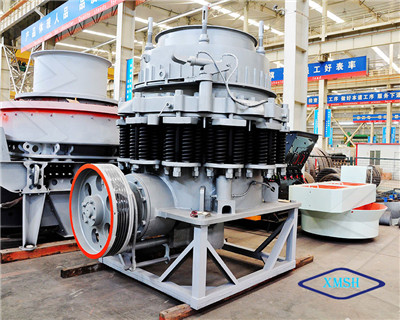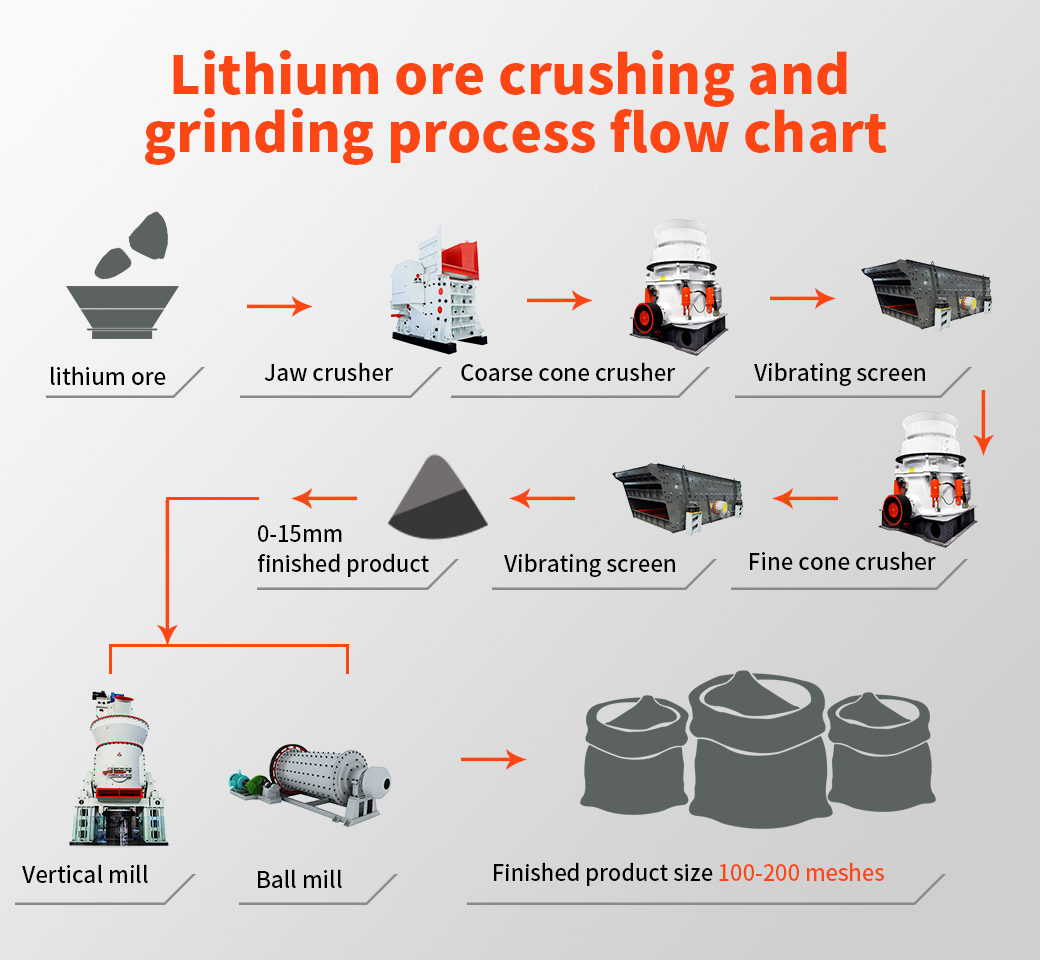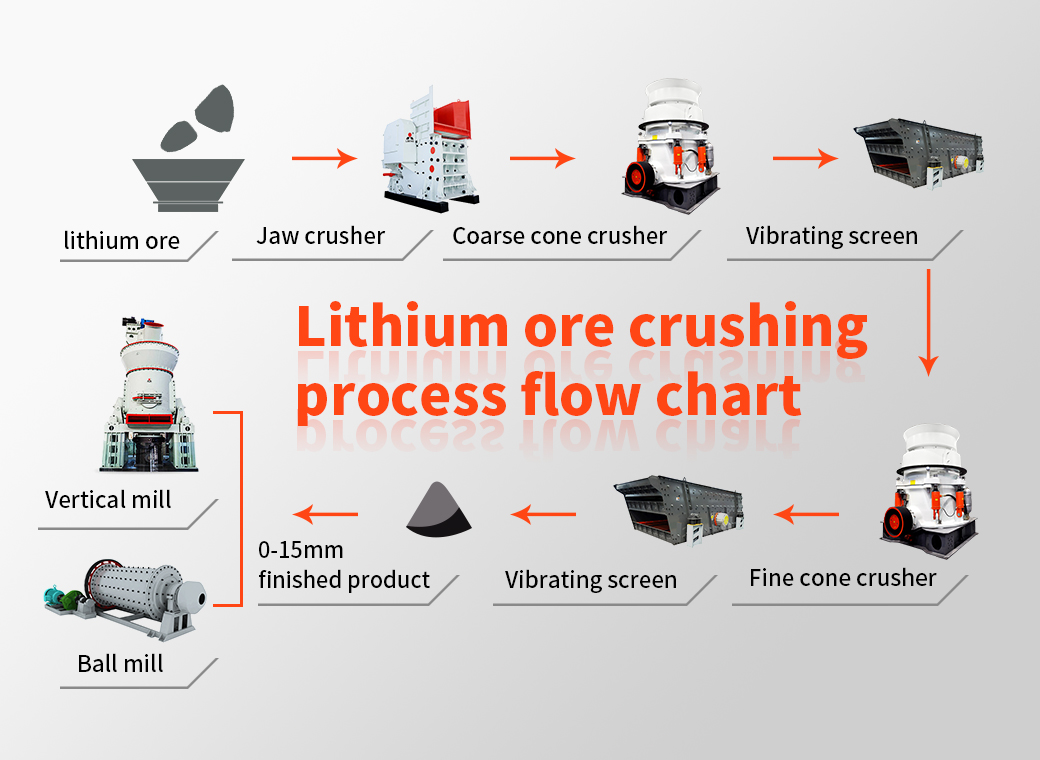(1) How to make the cone crusher easy to start in winter?
There should be seasonality when maintaining the crusher. For example, when the temperature is low in winter, diesel and water are more likely to freeze, and it is difficult to start the machine. When the crusher is used in winter, due to the cold climate, the diesel engine is difficult to start, and the cooling water and The electrolyte is easy to freeze, and at the same time, parts wear and fuel consumption increase significantly. Therefore, corresponding maintenance measures must be taken before the winter, and the crusher must be thoroughly inspected and maintained to ensure that the construction machinery can survive the winter safely. Therefore, maintenance in winter is different from other seasons. How to maintain the crusher in winter?

1) Cleaning of the crusher
Cleaning the exterior of the diesel engine, chassis and working devices of construction machinery can play a role in descaling and decontamination. During the cleaning process, damage to various devices, components and oil leakage can also be found, and preliminary work can be done for the next maintenance. It is strictly forbidden to use a high-pressure and high-temperature water gun to wash the parts with high waterproof requirements, especially the electrical parts, so as to avoid damage.
2) Selection and replacement of oil
Selection of fuel oil
Diesel is easy to form wax at low temperature, the viscosity increases, the fluidity becomes poor, and the atomization is poor, which deteriorates the combustion process and reduces the power and economy of the diesel engine. In order to make the diesel engine work softly and reduce fuel consumption, diesel with lower freezing point should be selected. The general selection principle is: the freezing point of diesel oil is about 5°C lower than the ambient mixing degree. The diesel grades available in winter are: -10#, -20#, -35#, etc.
During maintenance, the fuel system should be cleaned. Thoroughly clean all filters, replace the fuel filter element, discharge the sewage from the oil-water separator and clean it. Colleagues check the working condition of the oil pump to eliminate hidden troubles.
Replacement of diesel engine oil
Diesel engines should use low-temperature oil with lower viscosity. Try to choose high-performance engine oil, which is not only not easy to oxidize at high temperature, but also will not leave deposits in the precision parts of the diesel engine, which can greatly extend the life of the diesel engine. Multi-grade oil can work in a wide temperature range, generally choose multi-grade oil with viscosity grade of SAE5W-40 or SAE10W-40. When changing the oil, the oil filter should be replaced or cleaned.
Change oil and grease
During seasonal maintenance, replace the gear oil in the transmission, transfer case, differential and steering gear with gear oil for winter use, and pay attention to cleaning when changing the oil.
3) Maintenance of parts
Maintenance of the diesel engine cooling system Check the working state of the thermostat to prevent the water temperature of the diesel engine from being too low or too high. Remove limescale from the water jacket. It is necessary to choose a long-term antifreeze that is about 10°C lower than the lowest temperature in the area where the construction machinery is used, and has antifreeze in winter and anti-boiling, anti-corrosion and anti-scaling in summer. Once the water tank is found to have silt deposits, remove it immediately.
Maintenance of electrical equipment Check the motor wiring of the battery. Check and adjust the electrolyte density. Service the starter motor. Increase the alternator charging voltage. The battery should be charged frequently in winter. Maintain the preheater.
The maintenance of the brake system should pay attention to whether the brake fluid is sufficient and whether the quality is deteriorated. Check the oil-water separator. Whether the drain switch is working properly. Check whether the brakes are weakened, deviate, the pedaling force of the brake pedal is insufficient, and the brakes do not return, and adjust them in time.
(2) The oil pressure in the oil pipes before and after the filter is different, how to deal with it?
Cause of failure: filter clogged
Troubleshooting: When the oil pressure difference exceeds 0.04MPa, the filter must be cleaned, first make the oil not pass through the ground filter, and then remove the filter for cleaning, so as to directly supply oil to the crusher, no more than 2-3h.
(3) There is no oil flow in the oil flow indicator, but the oil pressure is lower than 0.5MPa, how to solve it?
Reasons for failure: 1. Low oil temperature; 2. Oil switch is not turned on properly; 3. Oil pump is not easy to use;
Troubleshooting methods: 1. Oil heating; 2. Turn on the switch; 3. Stop the crusher and replace the oil pump;
(4) The amount of oil returned in the fuel tank is reduced, and the oil level is significantly reduced. What should I do?
Causes of failure: 1. Oil leakage from the bottom cover of the crusher; 2. Oil leakage from the flange of the transmission bearing shell; 3. The groove of the spherical bearing seat ring is blocked or too much oil is supplied, and the oil leaks from the dustproof device.
Troubleshooting methods: 1. 2. Stop the machine, find out the cause and eliminate it, and then add oil to the fuel tank; 2. Stop the machine, clean the oil return ring groove, adjust the amount of oil supplied, and add oil to the fuel tank.
(5) The oil temperature exceeds 55℃, but the oil pressure does not rise. What is the reason?
Cause of failure: There is something wrong with the eccentric shaft sleeve;
Troubleshooting method: stop the machine to check the straight bushing and tapered bushing, find out the cause of the fault and clear it;
(6) When the oil pressure rises, the oil temperature also rises, how to solve it?
Cause of failure: The oil pipe or the oil circuit inside the crusher is blocked
Troubleshooting method: Stop the machine to find the blockage and clear it.
(7) The temperature of the oil coming out of the cooler exceeds 45℃?
Reasons for failure: 1. No cooling water; 2. High temperature of cooling water; 3. Blockage of cooler
Troubleshooting method: supply cooling water; check whether the water pressure is too low, increase the pressure as much as possible, check the cooling water temperature; clean the cooler
(8) What is the reason for the moving cone being lifted?
Causes of failure: 1. The oil temperature is too low in winter, which makes the oil supply pressure too large; 2. The safety valve fails, and the oil supply pressure is too high; 3. The oil pump used is too powerful
Troubleshooting methods: 1. Preheat the lubricating oil; 2. Adjust the safety valve; 3. Replace the oil pump
(9) What should I do if the water seal does not enter the water?
Cause of failure: There may be a problem inside the crusher.
Troubleshooting method: stop and check the inside of the crusher to find out the cause and eliminate it.
(10) The crusher vibrates, and the spring loses its elasticity quickly
Reasons for failure: 1. Uneven or excessive feeding; 2. Too much fine ore in feeding; 3. Too much fine ore in feeding; 4. Insufficient spring tension;
Troubleshooting methods: 1, 2, 3 to eliminate the reasons indicated; 4 to adjust the height according to the spring, but not to exceed the specified value
(11) There is a violent impact sound, the support ring jumps up, and then the crusher works normally again
Cause of failure: The materials that cannot be broken enter the crushing cavity, and then are discharged out.
Troubleshooting Methods: Failure
(12) “Crackling” sound when crushing ore
Causes of failure: 1. The lining of the crushing motor cone is loose; 2. The lining of the fixed cone is loose
Troubleshooting methods: 1. Always check the nuts that hold the lining plate, if the zinc alloy is loose, it should be poured again; 2. Check the U-shaped bolts that fix the lining plate, if the zinc alloy is loose, it should be poured again.
(13) The crusher vibrates violently, and the moving cone rotates quickly
Causes of failure: The main shaft is stuck in the cone bushing; the oil is lacking or the oil is not clean; the spherical tile is worn, or other reasons cause the moving cone to sink, and the clearance between the main shaft and the cone bushing is too small.
Troubleshooting method: stop and check, find out the cause and eliminate it.
(14) After the hoarse “crack” sound, the drive shaft or pulley turns and the moving cone does not move
Causes of failure: 1. The main shaft is broken; 2. The bevel gear key is damaged; 3. The pulley key is damaged.
Troubleshooting method: stop inspection, find out the damaged parts, and replace the damaged parts.
(15) The current is too high
Reasons for failure: 1. Too much ore feeding; 2. Poor lubrication; 3. Damage to the bearing or spherical bearing; 4. The bearing contact surface is seriously insufficient; 5. The large bevel gear part rubs against the lower part of the spherical bearing seat.
Troubleshooting methods: 1. Adjust the ore feeding; 2. Strengthen the lubrication; 3. Replace the bearing; 4. Re-scrape or replace; 5. Add a pad to the lower part of the spherical bearing seat.





 Spodumene: According to the hard rock crushing process, the crushed product is generally 5-40mm, combined with different design requirements of customers, two-end or three-stage crushing, high-grade crushed products (above 4-5%) can be directly used in the metallurgical process to produce lithium carbonate Or lithium hydroxide, the particle size of the finished product is generally around 20-40mm; low-grade generally requires ball mill grinding and separation, and the particle size of the finished product is generally around 5-20mm;
Spodumene: According to the hard rock crushing process, the crushed product is generally 5-40mm, combined with different design requirements of customers, two-end or three-stage crushing, high-grade crushed products (above 4-5%) can be directly used in the metallurgical process to produce lithium carbonate Or lithium hydroxide, the particle size of the finished product is generally around 20-40mm; low-grade generally requires ball mill grinding and separation, and the particle size of the finished product is generally around 5-20mm;
